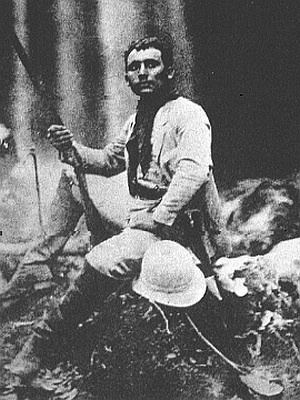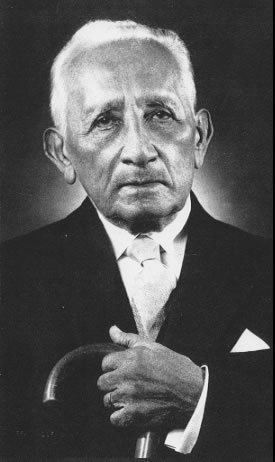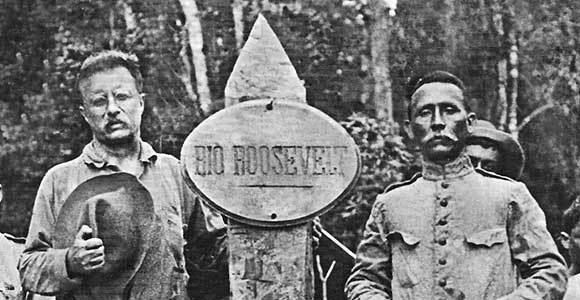Name Candido Rondon | ||
 | ||
tornado em marechal rondon 2
Cândido Mariano da Silva Rondon, or Marechal Rondon (5 May 1865 – 19 January 1958) was a Brazilian military officer who is most famous for his exploration of Mato Grosso and the Western Amazon Basin, and his lifelong support of Brazilian indigenous populations. He was the first director of Brazil's Indian Protection Bureau (SPI/FUNAI) and supported the creation of the Xingu National Park. The Brazilian state of Rondônia is named after him. He was made Marshal, the highest military rank in Brazil.
Contents
- tornado em marechal rondon 2
- Early life
- As an army engineer
- Explorations
- Expedition with Roosevelt
- Later life
- Homages
- PositivismComtism
- References

Early life
He was born on 5 May 1865 in Mimoso, a small village in Mato Grosso state. His father, Cândido Mariano da Silva, was of Portuguese ancestry, and his mother was a Native American from the Terena and Bororo. His father died of smallpox before Cândido was born, and his mother died when he was two years old. He was raised by his grandparents until they too died while he was still a boy. After this, he lived with his mother's brother, who adopted Cândido and gave him his family name, Rondon. His uncle raised him until he reached sixteen. After finishing high school at the age of 16, he taught elementary school for two years, and then joined the Brazilian army. On joining the military, he entered officer's school and graduated in 1888 as a second lieutenant. He was also involved with the Republican coup that overthrew Pedro II, the last Emperor of Brazil.
As an army engineer

In 1890, he was commissioned as an army engineer with the Telegraphic commission, and helped build the first telegraph line across the state of Mato Grosso. This telegraph line was finally finished in 1895, and afterwards, Rondon started construction on a road that led from Rio de Janeiro (then capital of the republic) to Cuiabá, the capital of Mato Grosso. Until this roadway was complete, the only way between these two cities was by river transport. Also during this time, he married his wife, Chiquinha Xavier, and together they had 7 children. From 1900 to 1906, Rondon was in charge of laying telegraph line from Brazil to Bolivia and Peru. During this time he opened up new territory, and was in contact with the warlike Bororo of western Brazil. He was so successful in pacifying the Bororo, that he completed the telegraph line with their help. Throughout his life, Rondon laid over 4,000 miles of telegraph line through the jungles of Brazil.

Marshall Rondon was honored with the title "Patron of the Communications Corps of the Brazilian Army", by Decree No. 51,960, of 26 April 1963.
Explorations
As a result of Rondon's competence in constructing telegraph lines, he was put in charge of extending the telegraph line from Mato Grosso to the Amazon. In the course of constructing the line, he discovered the Juruena river, in northern Mato Grosso which is an important tributary of the Tapajós river. He also discovered the Nambikwara tribe, which had until then killed all Westerners they had come in contact with.

In May 1909, Rondon set out on his longest expedition. He set out from the settlement of Tapirapuã in northern Mato Grosso heading northwest to meet up with the Madeira river, which is a major tributary of the Amazon River. By August, the party had eaten all of its supplies, and had to subsist on what they could hunt and gather from the forest. By the time they reached the Ji-Paraná River, they had no supplies. During their expedition they discovered a large river between the Juruena, and Ji-Paraná river, which Rondon named the River of Doubt. To reach the Madeira, they built canoes, and reached the Madeira on Christmas Day, 1909.
When Rondon reached Rio de Janeiro, he was hailed as a hero, because it was believed that he and the expedition had died in the jungle. After the expedition, he became the first director of the Brazilian Government's Indian Protection Agency, or the SPI.
Expedition with Roosevelt
In January 1914, Rondon left with Theodore Roosevelt on the Roosevelt-Rondon Scientific Expedition, whose aims were to explore the River of Doubt. The expedition left the Tapiripuã, and reached the River of Doubt on 27 February 1914. They did not reach the mouth of the river until late April, after the expedition had suffered greatly. During the expedition, the river was renamed the Rio Roosevelt.
The Adventure down the River of Doubt was the most difficult of Roosevelt's life. All the men except Rondon suffered from ailments and constant maladies.
Later life
After the expedition of 1914, Rondon worked until 1919 mapping the state of Mato Grosso. During this time he discovered some more rivers, and made contact with several indigenous tribes. In 1919, he became chief of the Brazilian Corp of Engineers, and the head of the Telegraphic Commission.
In 1924 and 1925, he led army forces against a rebellion in the state of São Paulo. From 1927 to 1930, Rondon was put in charge of surveying all of the borders between Brazil and its neighbors. In 1930, he was interrupted by the Revolution of 1930, and he resigned from his position as head of SPI. During 1934–1938, he was in charge of a Diplomatic Mission, to mediate a dispute between Colombia and Peru over the town of Leticia. In 1939, he resumed his directorship of SPI, and expanded the service to new territories of Brazil. In the 1950s he supported the Villas Boas brothers campaign, which faced strong opposition from the government and the ranchers of Mato Grosso and led to the establishment of the first Brazilian National Park for indigenous people along the Xingu River in 1961. He died in 1958 in Rio de Janeiro at the age of 92.
Homages
Marshal Cândido Rondon is considered one of the foremost Brazilian heroes and patriots and has thus been honoured by population and government in many ways. He is the "Father of Brazilian Telecommunications" and 5 May is the National Day of Telecommunications, established in his honour. Had the glory of having his name written in letters of gold in massive Book of the Geographical Society of New York.
In addition, thousands of streets, schools and other urban features and organizations have received Rondon's name.
Positivism/Comtism
From 1898 onward Rondon was an orthodox member of the Igreja Positivista do Brasil (Positivist Church of Brazil), which is a Religion of Humanity based in the thought of Auguste Comte. The creed he embraced from it emphasized naturalism, science, and altruism rather than any supernatural forces.
